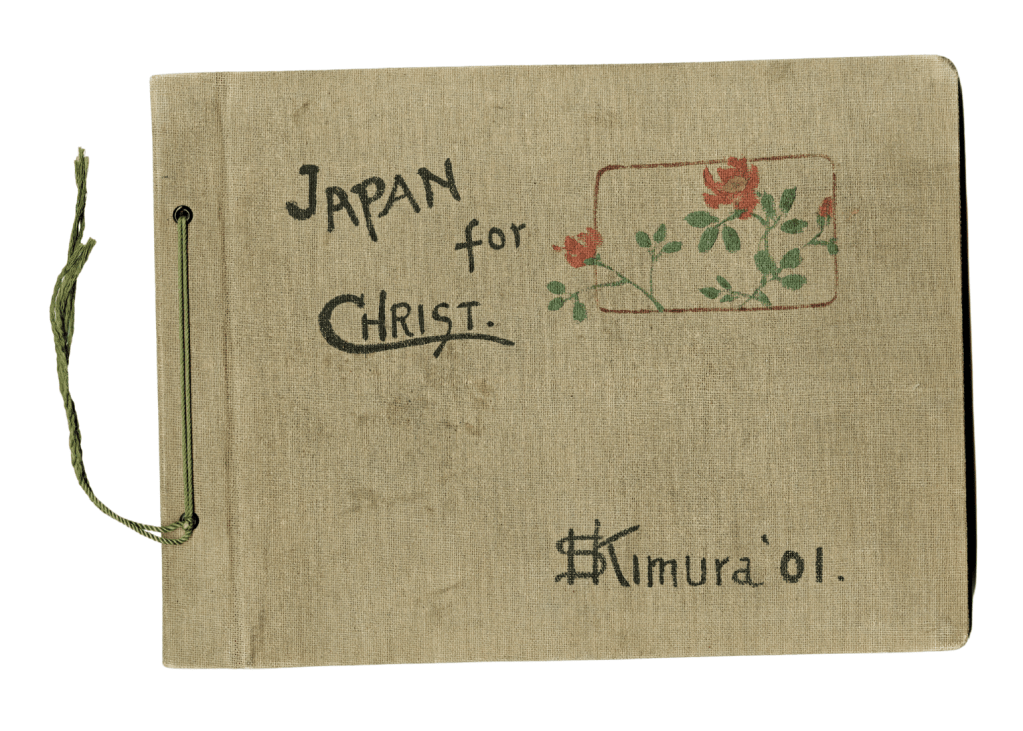
Kimura Kiyomatsu (木村 清松), known in the United States as Henry Seimatsu Kimura, was born in 1874 to a family of sake brewers in Gosen City, Niigata Prefecture. At seventeen Kimura was baptized during an evangelistic service held by Teiichi Hori in Niigata. His conversion to Christianity led to conflict within his family, especially with his father, who disowned him; although both his parents and his two brothers eventually became Christians.
After the fall-out over his conversion, Kimura left home to attend Tohoku Gakuin University. In 1894, seeking further Christian education, Kimura sailed for the United States. Arriving in San Francisco, Kimura briefly joined the Salvation Army before leaving to study at the Methodist Episcopal Church’s University of the Pacific in San Jose. During his studies, Kimura served with the Methodist Japanese Mission in San Jose, as well as traveled to preach at Japanese churches throughout northern California.
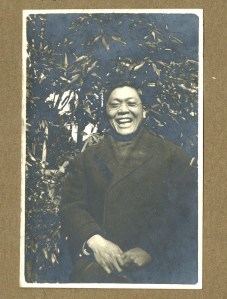
When D. L. Moody visited California on a speaking tour in March 1899, Kimura sought out the famous evangelist. Impressing Moody with his conviction for Christ and his sheer persistence, Moody sponsored Kimura’s further education at the Moody Bible Institute (MBI) in Chicago.
After two years at MBI, Kimura returned to Japan in 1901, beginning a fifty-year ministry across Japan, China, and the South Pacific. Along with pastorates at Kyoto’s Rakuyo Church and Osaka’s Minami Church and Tenma Church (among others), Kimura served as an itinerant evangelist for the United Church of Christ in Japan.
In 1914, Kimura visited the U.S. and encountered a Billy Sunday Campaign in Denver, Colorado. Captivated by Sunday’s dynamic delivery and urgent message, Kimura returned to Japan with a new vision for evangelism inspired by the popular American evangelist. An October 1915 issue of The Christian Register characterized Kimura as the new “Japanese Billy Sunday”:
“A great tent which he secured he pitched in the immediate vicinity of the houses of parliament in Tokyo, and there he has been preaching since, engaging the constantly increasing attention of the people of Tokyo…. Like Sunday, he rushes back and forth across the platform, gesticulates widely, twists and crouches in dozens of extreme attitudes, and shouts out his accusations, challenges, and invitation with intense force. Sometimes when his voice fails he uses a megaphone. The Japanese language apparently does not admit as much scope for slang as there is in American speech, but Kimura goes as far as he can in that direction, and puts his message continually in the vernacular of the streets.”
Just as Billy Sunday encountered criticisms for allegedly promoting superficial conversions on his “Sawdust Trail,” H. S. Kimura’s tent revivals in Japan also drew skepticism from some Western missionaries and Japanese pastors. His approach to theology and his popular evangelistic methods sparked further debate in 1918 with his participation in Japan’s “Second Advent Movement,” a brief but influential revival movement centered on Biblical prophecy and the imminent return of Christ.
Wheaton Archives & Special Collections holds one photo album chronicling H. S. Kimura’s evangelistic journeys through Japan, the South Pacific, and the United States in Collection 330: Records of Moody Church. Although living in Japan, Kimura had maintained his membership with Moody Church in Chicago, and this album was likely created and shared with the church as a testament to his ongoing ministry. Below, you can explore nine pages from the album.
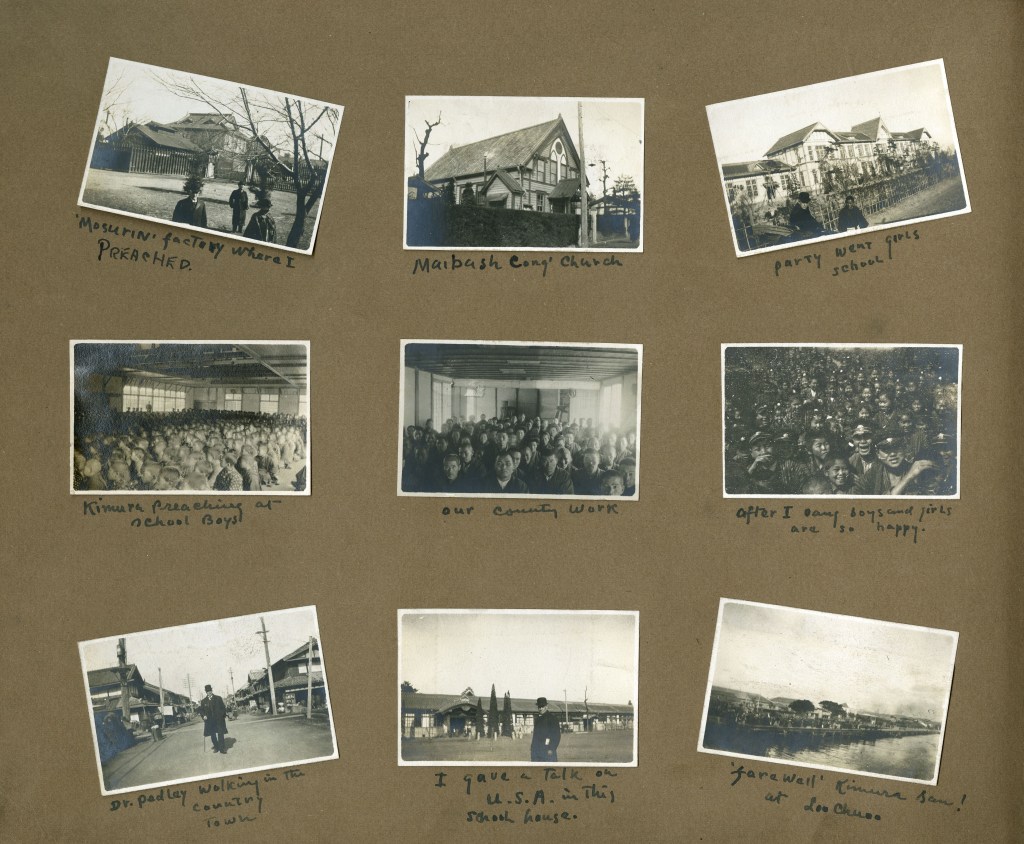
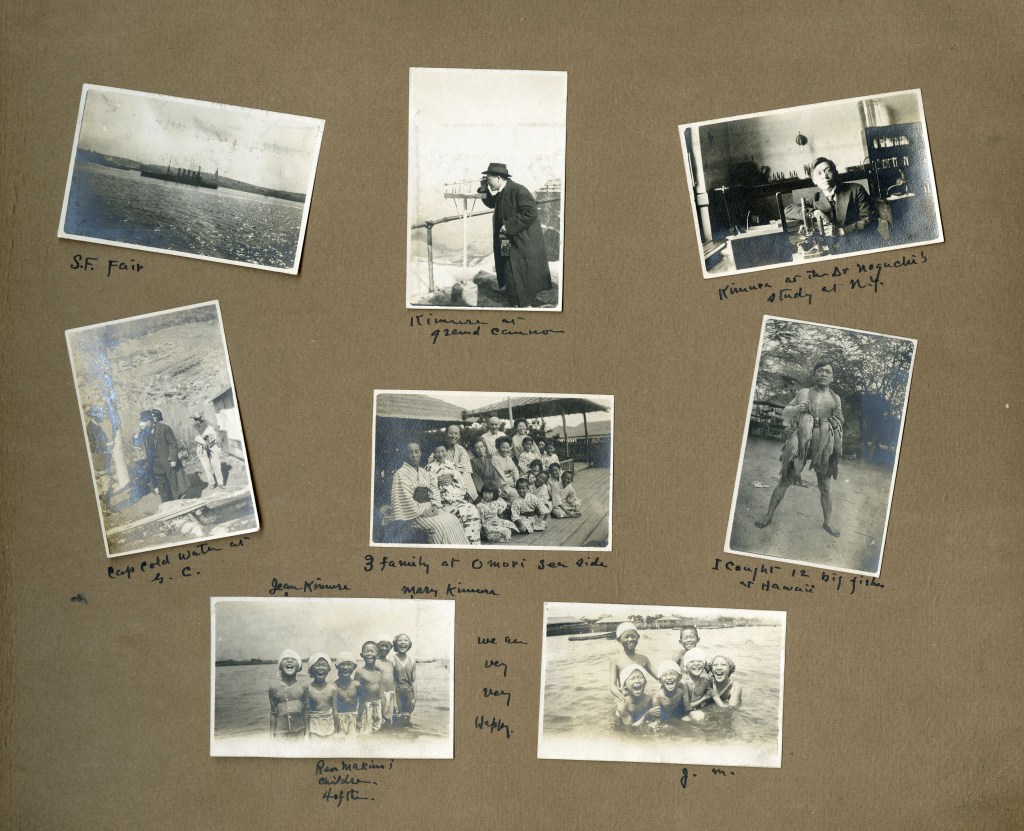
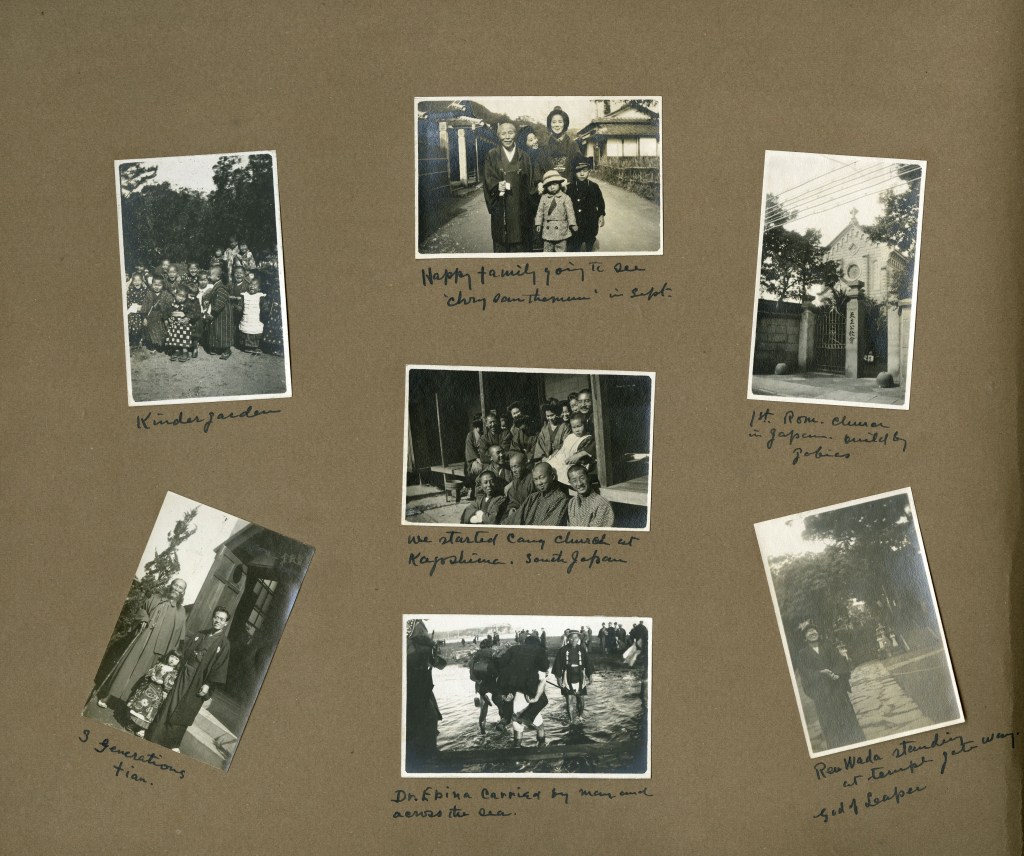


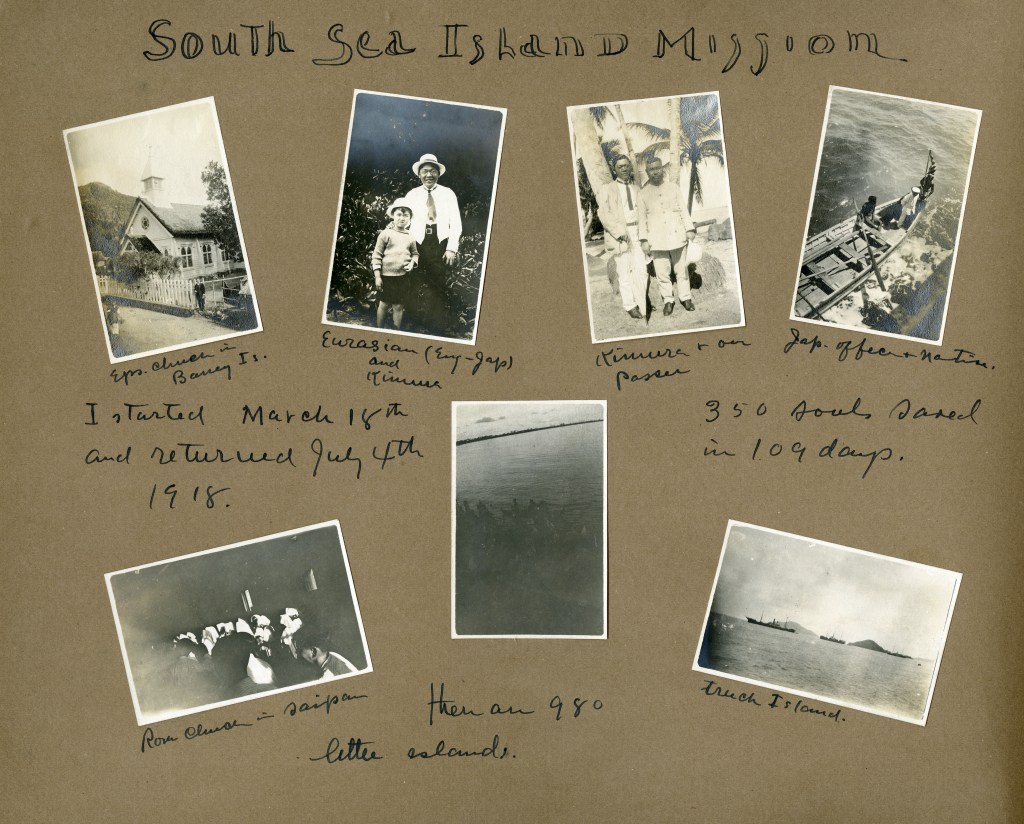

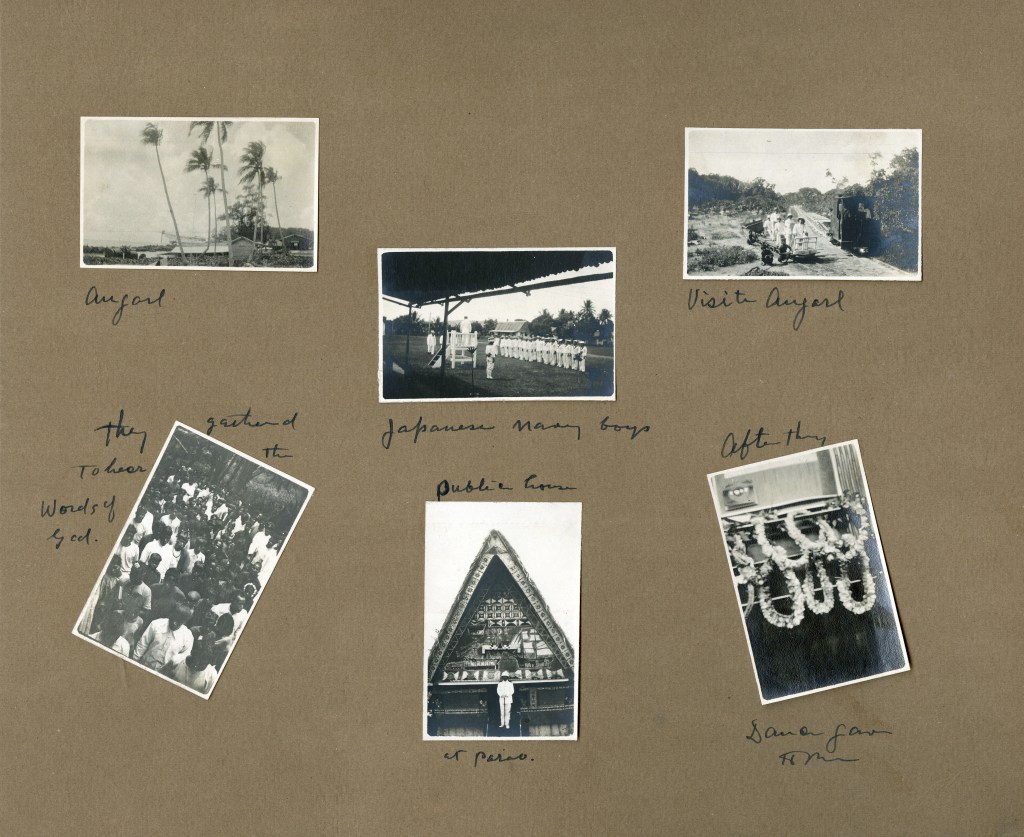
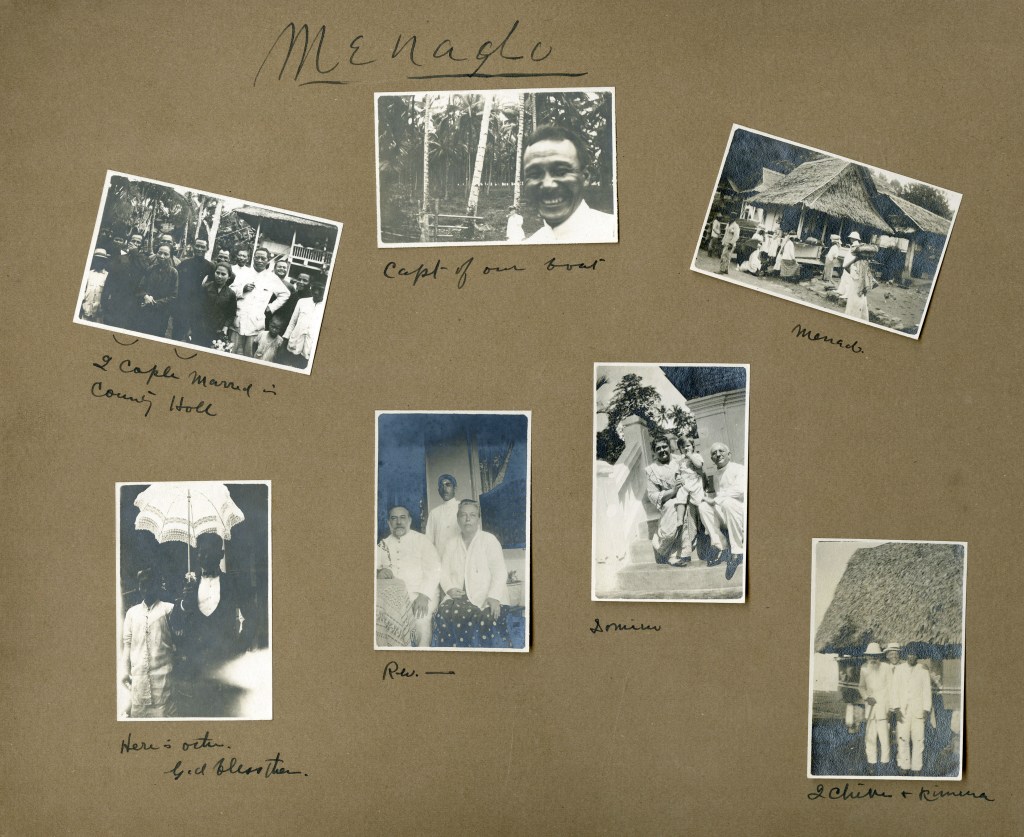
In addition to the photo album, Wheaton Archives & Special Collections holds one small folder of correspondence and evangelistic flyers related to H. S. Kimura in SC-099: Papers of Jessie Pen Lewis.
For more on the early life and ministry of H. S. Kimura, see Mrs. Delevan L. Pierson’s account of “Hallelujah Kim” in the Missionary Review of the World (1916). A later English biography, Henry Seimatsu Kimura of Japan : The Life and Anecdotes of a Veteran Soldier of the Cross was published in 1965. Kimura’s younger brother Seishiro Iwamura, who became a pioneer in early childhood Christian education in Japan, wrote a popular account of his brother’s evangelism in the 1930s, (translated as) Kiyomatsu, Captivated by Christ. After Kimura’s death in 1958, the Tenma Church of Christ also published a memorial of his decades of ministry with the United Church of Christ in Japan.